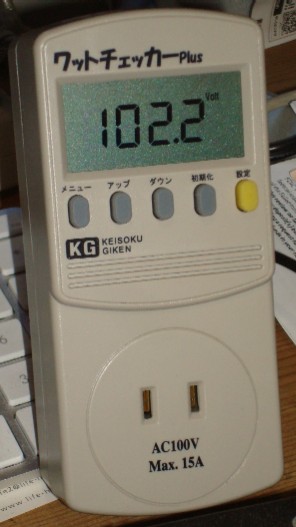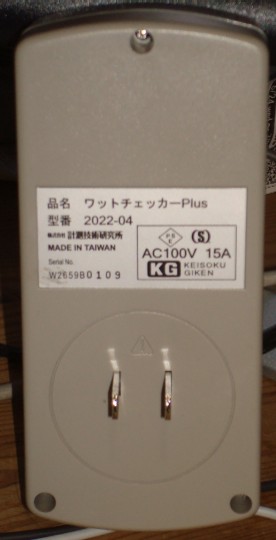On 24 February 2010 Bloom Energy, a Sunnyvale, California based company launched its solid oxide fuel cell (SOFC), which is currently being field tested at several large customers, including eBay, Google and WalMart. CBS “60 Minutes” ran a program on the company and their product three days earlier. Their technology will let you generate your own electric power from natural gas or other fuels. Each Bloom Energy Server has a power output of 100 kW and is about the size of a small truck. Google was the first company to have a unit installed in July 2008. It now has 4 units and eBay has 5. They are the two most visible installations so far. It may be coincidence, but Google was not only the first customer of Bloom Energy, in 1999 it had also received venture funding from Kleiner Perkins Caufield & Byers (KPCB), the major backer behind Bloom Energy. Other customers are Staples, Walmart, FedEx, Coca Cola and Bank of America.
Costs versus carbon savings
According to Bloom Energy, their Servers can generate electricity at a cost of 8-10 cents per kWh (read Jesse Jenkins’ interesting article on Forbes.com). That is after California state and US federal subsidies for the purchase of the units, which go for at $700,000-$800,000 each or some $7,000-$8,000 per kW of rated power. Their cost per installed kW is high, more than an order of a magnitude higher than the around $600 per kW of rated output for combined-cycle gas turbines (CCGT), an established and proven technology that combines gas turbines with steam turbines for best efficiency. CCGTs are used in many power stations that supply the electric grid.
Even with US tax payers picking up around half the cost, the Energy Servers are still six times as expensive per kW as CCGTs. That might be an acceptable price for nurturing a new technology, but Bloom Energy fuel cells are more expensive without giving clearly superior results: While SOFC technology as used by Bloom Technology achieves efficiencies of about 50-55%, CCGT achieves thermal efficiencies of close to 60%, which translates to overall efficiencies similar to what Bloom can offer. Consequently, specific CO2-Output is virtually identical for both technologies, at about 0.8 lb of CO2 per kWh when run on natural gas for either technology. Though Bloom Energy undercuts coal fired power stations by some 60% on greenhouse gas emissions, it offers no clear advantage in that respect when compared to the most advanced gas turbines, which do equally well but are much cheaper to install than fuel cells.
Transmission and conversion losses
It is true that decentralized generation adjacent to your parking lot can save grid transmission losses, but these losses are actually smaller than many people assume: In 1995 some 7.2% of electricity generated in the US was lost in transmission (see Wikipedia). With steam turbine power generation the bulk (60-70%) of the energy losses is not during grid transmission, but conversion losses during generation. Not all the heat from a gas, oil or coal fire can be turned into mechanical and subsequently electrical energy. The laws of physics limit the maximum possible efficiency according to the temperature difference between the hot side and the cold side of the working cycle of any kind of engine. The low temperature heat that is left is waste heat which accounts for 60% or more of the initial heat from burnt fuel. In centralized power stations it ends up warming rivers or oceans or ambient air while condensing steam back into water to run it trough the boiler and steam turbine once more. It can not be put to use because it’s too far from most consumers.
If you really wanted to cut down on CO2 emissions from fossil fuel, you need to address the major conversion losses and not just the minor transmission losses. If power was generated where it’s consumed, then all that waste heat was still available for low temperature applications (below 100°C / 180F), such as providing warm water, heating buildings and even cooling them via absorption chillers. Yet this major benefit of decentralized generation is for now rejected as impractical by Bloom Energy:
Some makers of legacy fuel cell technologies have tried to overcome these limitations by offering combined heat and power (CHP) schemes to take advantage of their wasted heat. While CHP does improve the economic value proposition, it only really does so in environments with exactly the right ratios of heat and power requirements on a 24/7/365 basis. Everywhere else the cost, complexity, and customization of CHP tends to outweigh the benefits.
(Bloomenergy: Solid Oxide Fuel Cells)
At Google or eBay the waste heat produced in the fuel cell only heats the air in the parking lot. By contrast, the EneFarm combined heat and power (CHP) system offered by Tokyo Gas in Japan, another natural gas powered fuel cell already on the market, is designed primarily as a hot water source, with electricity generation as a byproduct. When you run that fuel cell to generate hot water, you either use or sell the electricity produced in the process, but there is never any waste.
The potential of reverse fuel cell technology
In the CBS interview, the Bloom Technology CEO also mentioned the possibility of reversing the function of their fuel cell, producing hydrocarbons or other fuels from CO2, water and (perhaps solar) electricity. That one had me a bit puzzled. It will still be a few more decades before we will completely stop using hydrocarbons and coal for generating electricity. Until then, wouldn’t it be easier to simply cut back on burning gas, coal and and oil to make electricity, instead of using precious electricity (which we mostly produced by burning fossil fuel) to regenerate a fraction of that carbon-based fuel from CO2?
Reverse fuel cells make little sense for energy storage – chances are, if an SOFC is about 50% efficient at converting fuel into electricity, it probably won’t be much more efficient going the opposite direction, making fuel using electricity. Do the conversion both ways to even out power output between day and night and you end up losing 75% of the energy. Batteries would retain as much as 90% and lose only 10%. Still, one could see a role for reverse fuel cells at remote wind or solar installations for making methane or other chemical feed stocks from surplus electricity some time in the far future. It won’t be as an energy carrier though, because if you have spare electricity it’s far easier to electrolyze water and make hydrogen than to make methane, which requires a CO2 supply as well.
Let’s assume the Bloom Energy server produces 0.8 lbs of CO2 per kWh and a coal fired plant produces 2 lbs per kWh. If we assume that reverse fuel cell operating is about as efficient as regular fuel cell operation (some 50%), then per kWh (say from wind, geothermal or nuclear) you could turn only 0.2 lb of CO2 back into fuel. For each extra kWh of carbon-free electricity, would you invest it on
- preventing 2 lb of CO2 output from coal power or
- on avoiding 0.8 lb of CO2 output from a fuel cell or CCGT, or
- on a mere 0.2 lb of CO2 reduction in a reverse fuel cell?
From a carbon balance point of view, the latter makes no sense at all until you’ve completely exhausted the former two, i.e. completely stopped burning fossil fuel.
Summary
Bloom Technology’s fuel cell technology looks interesting, but nowhere near as revolutionary as its supporters would have us believe. It certainly has applications in niche markets such as backup power for data centers, but it remains severely hampered by excessive cost relative to its technically feasible performance. Lowered production costs, availability of smaller units and making use of waste heat could still improve its prospects, but don’t expect this device to revolutionize electricity production.
Apart from combined heat and power generation, fuel cells will find markets in remote locations where diesel generators are costly and maintenance intensive or too noisy, such as as tactical generators for the military, but they’re unlikely to make major inroads for electricity-only generation anywhere near the grid in the foreseeable future. That’s because gas turbines can be made just as efficient / low carbon and they’re known to work year after year, at a fraction of the capital cost of fuel cells.
Reading list:
John Doerr On Bloom Energy Launch: “This Is Like The Google IPO”
by Erick Schonfeld on Feb 24, 2010
The Bloom box
February 21, 2010
Doing The Math On Bloom Energy
Jesse Jenkins, 02.25.10
Is Bloom Energy’s Secret Ingredient Zirconia?
Michael Kanellos 2010-02-22
Combined Cycle Gas Turbine project
Kleiner Perkins, stealth, and Ion America
Posted by Matt Marshall on November 17, 2004


